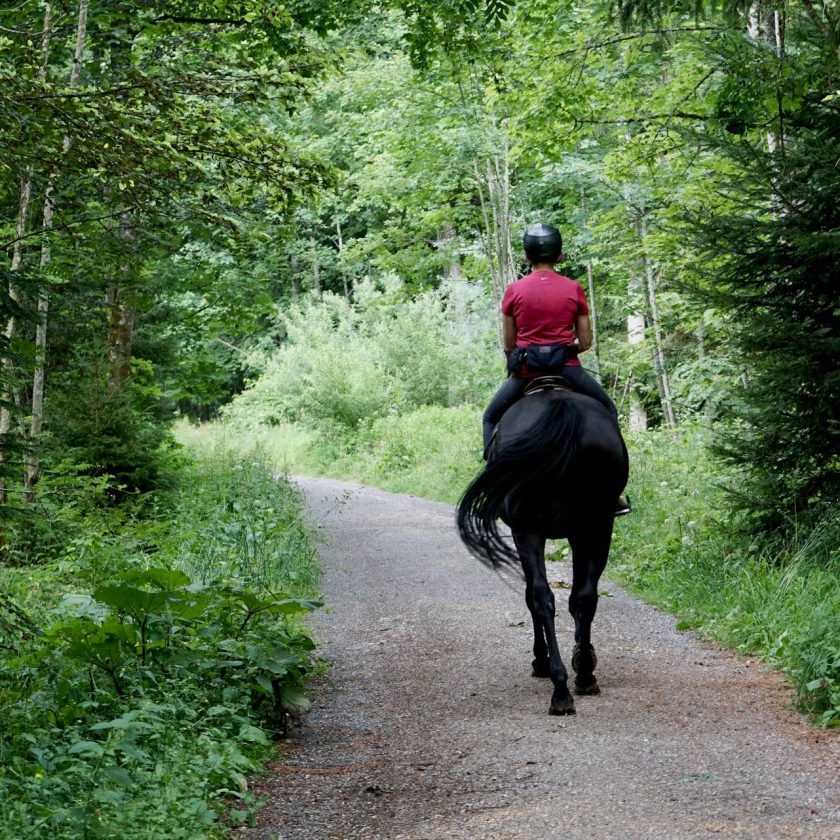Which straps should I attach my girth to?
In this article, Society of Master Saddlers’ President, Master Saddler, Master Bridle Maker, Master Harness Maker, Registered Master Saddle Fitter and Registered Qualified Bridle Fitter, Helen Reader, provides advice on:
Which straps should I attach my girth to?
This is a common question especially as saddles now can have up to five girth straps each side which makes it confusing for the rider. Traditionally there would be only three girth straps. One on a narrow web just behind the front arch of the tree and then a further two both stitched onto the same wider web set behind the first web. However, over recent years things have changed and now there are more girth options available to help improve stability and comfort.
V-web system
A point strap, which is attached to the point at the front of the tree and a balance web which is attached to the back of the tree, often by means of a v-web system. The v-web system allows the girth strap to find its own centre and not pull the saddle forwards. These additional girth strap positions allow your Society of Master Saddlers Registered Qualified Saddle Fitter (SMS RQSF) to assess which girth straps to use to achieve the best fit. The girth straps must not be used to make an ill-fitting saddle stay in place, they are used to refine the fit and help with stability of the saddle.
The most suitable girth straps
When the saddle is placed in the correct position on the horse, the most suitable girth straps will lay vertically inline with the girth groove and therefore the girth. Ideally the girthing arrangement will help to distribute the pull of the girth over a wider area and give better stability of the saddle. If that line is not vertical then the saddle will move forwards or backwards to achieve that vertical line and in turn will move the saddle either forwards onto the shoulders or backwards on to the lumber region. Neither of these options are desirable and will cause the horse discomfort and possibly pain.
The point strap is used if the saddle tends to slip forwards, however by using the point strap it can pull the front of the saddle down and make the back lift, move and bounce. Generally, a balance strap would also be used when using the point strap to support the back of the saddle. The balance strap can also be used to prevent saddle slip, but only if the cause of the saddle slip has been identified and can’t be corrected, eg. The rider has an injury which means that they ride twisted to one side and pull the saddle across with them. Then the balance strap can be used one side to support the saddle and prevent it from twisting, just like a balance strap is used on a side saddle to support the saddle on the side without the rider’s legs.
Your SMS RQSF will select the girth straps that they feel are most suitable after assessing the saddle on the horse and looking at the line of the girth groove. You will then be asked to ride in the saddle to make sure that the saddle doesn’t move, is balanced and that both you and the horse are comfortable in the saddle. If the saddle is used for jumping, then you will be asked to jump a fence or two. Whilst you are riding the SMS RQSF will be assessing the saddle on the horse, the horse’s way of going and your position and balance. Depending upon what they observe they may change the girthing arrangement and then ask you to ride again, so that they can reassess everything. Once they are happy with the girthing arrangement then they will explain to you which girth straps you need to use for your horse and why.
For more information visit www.mastersaddlers.co.uk or contact The Society of Master Saddlers on 01449 711642
You may also like to read





